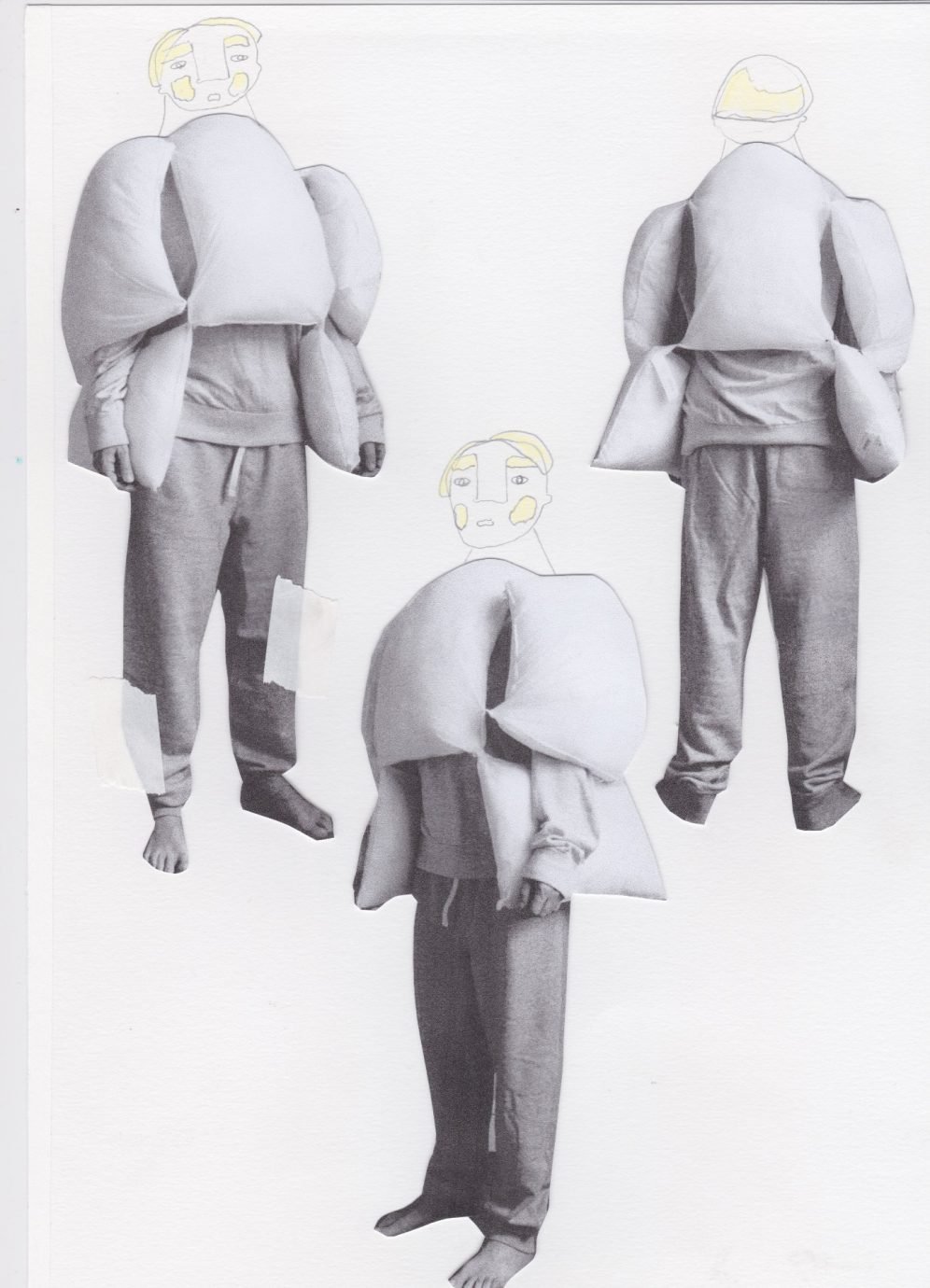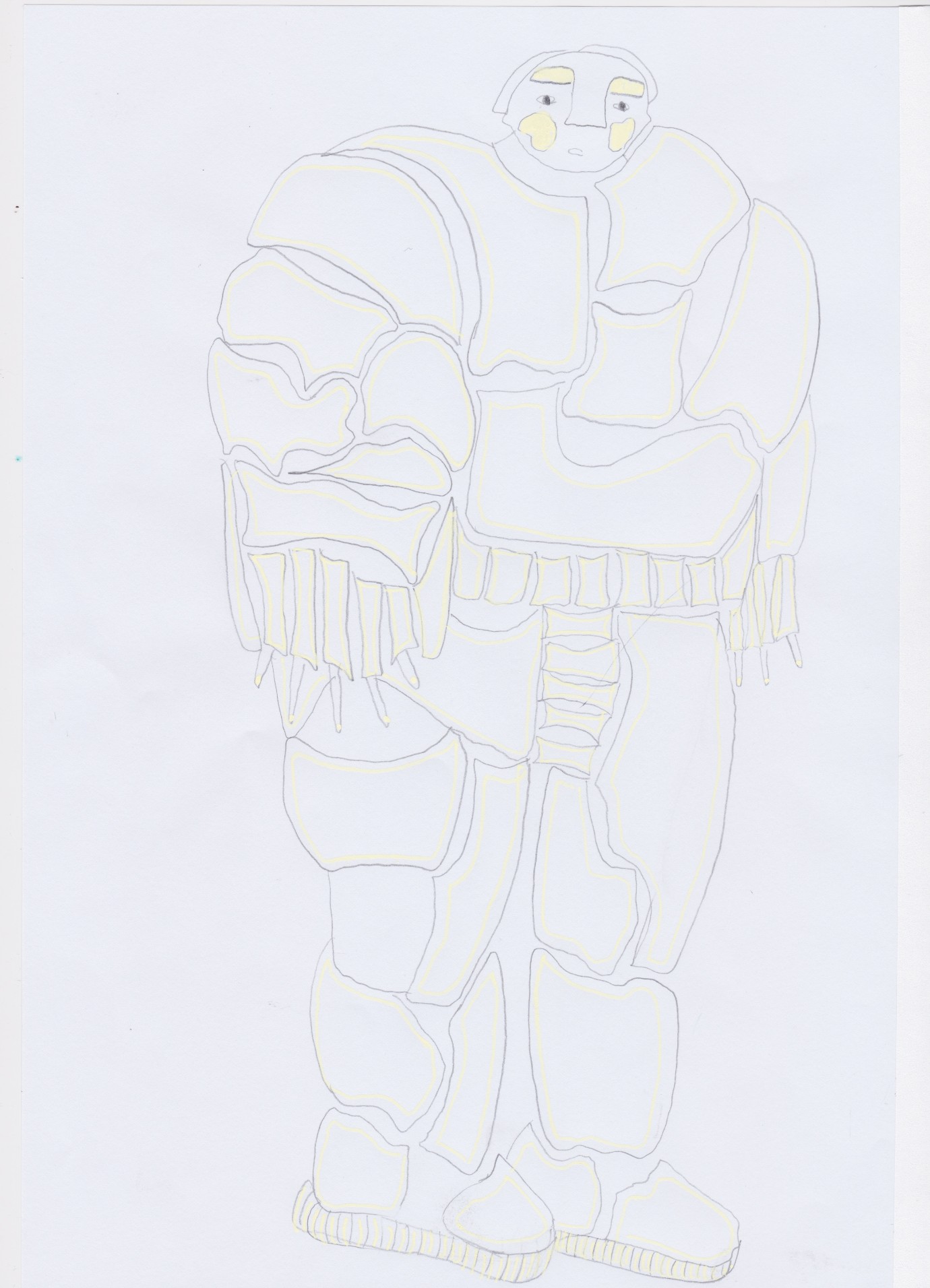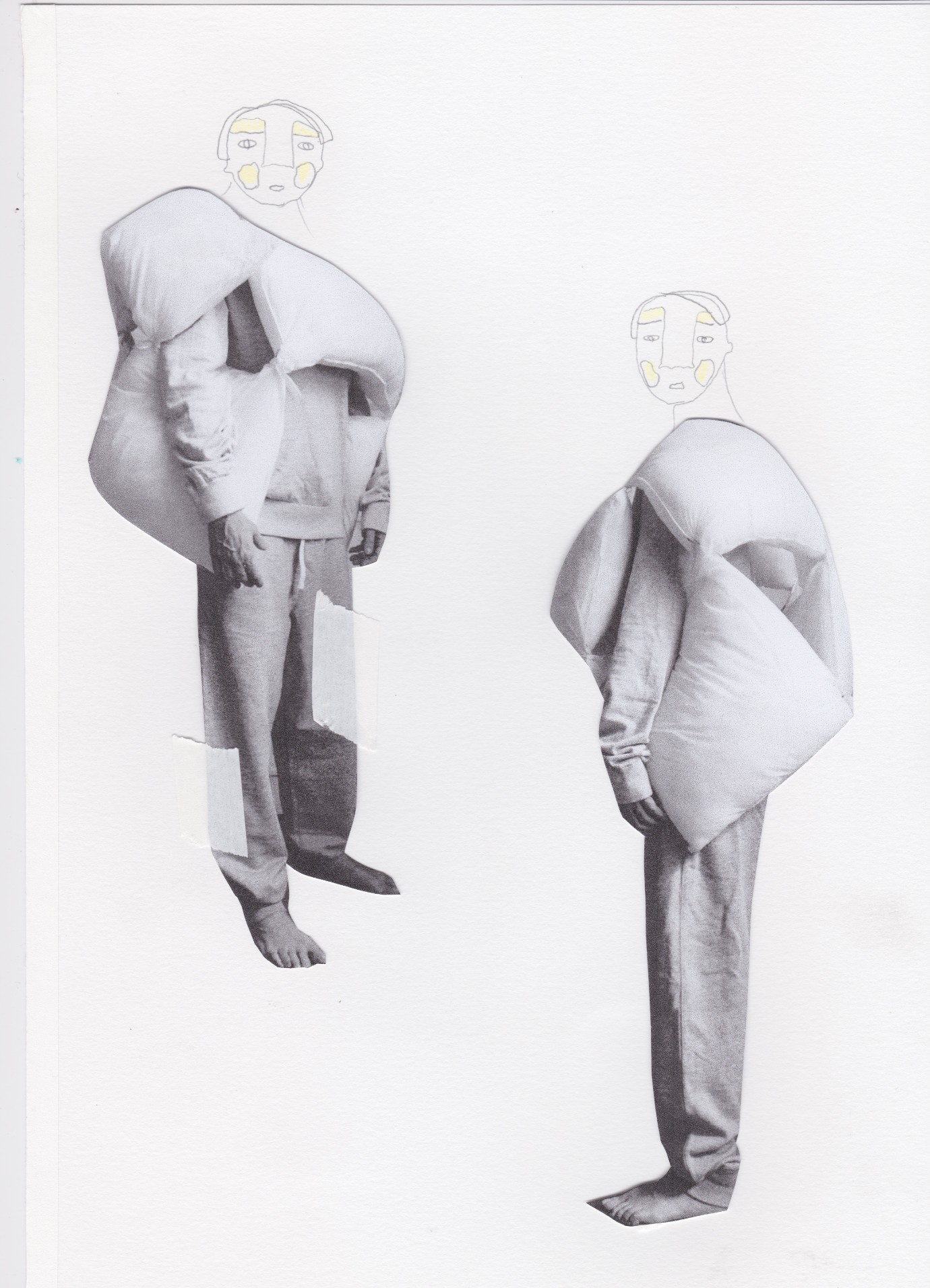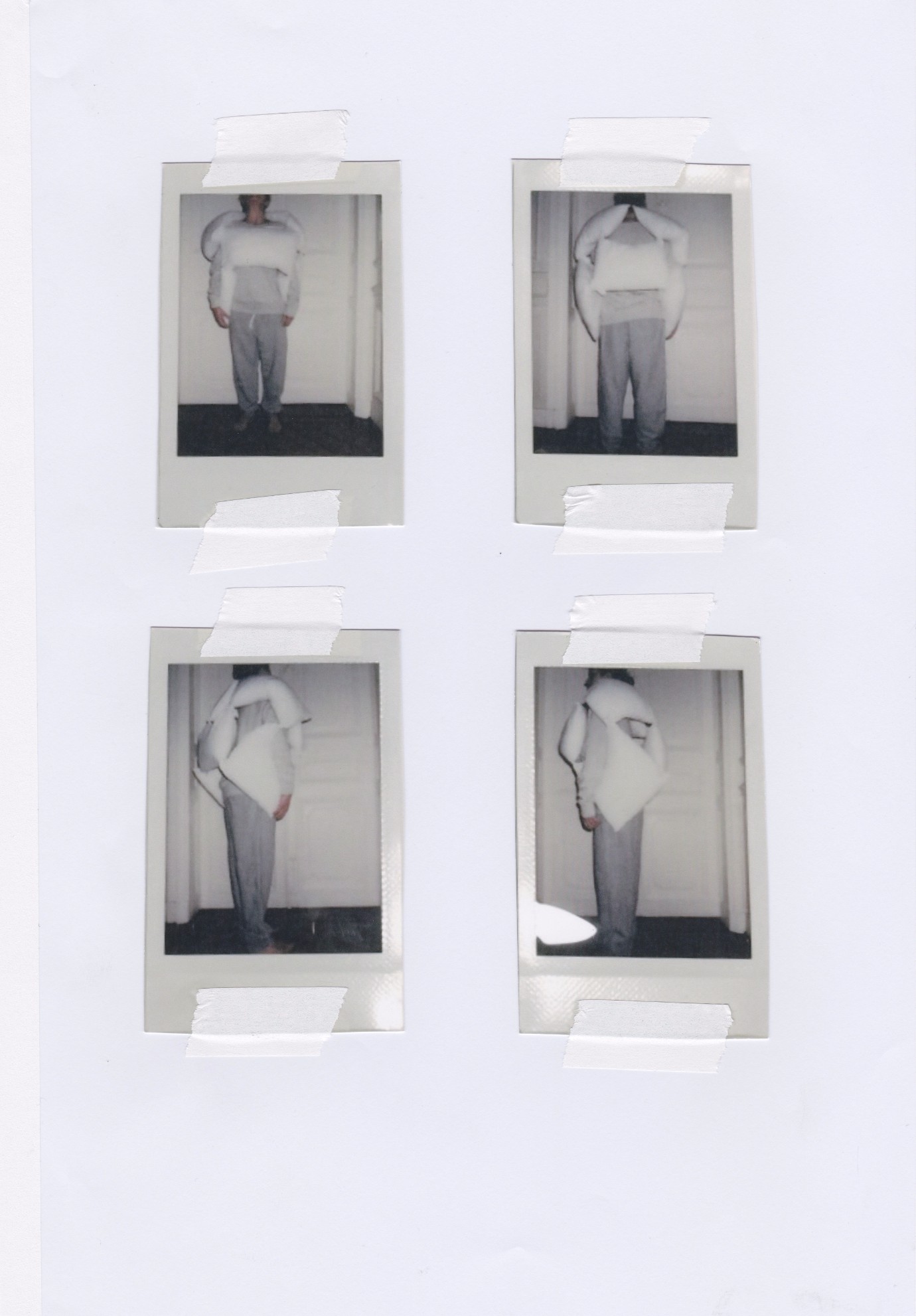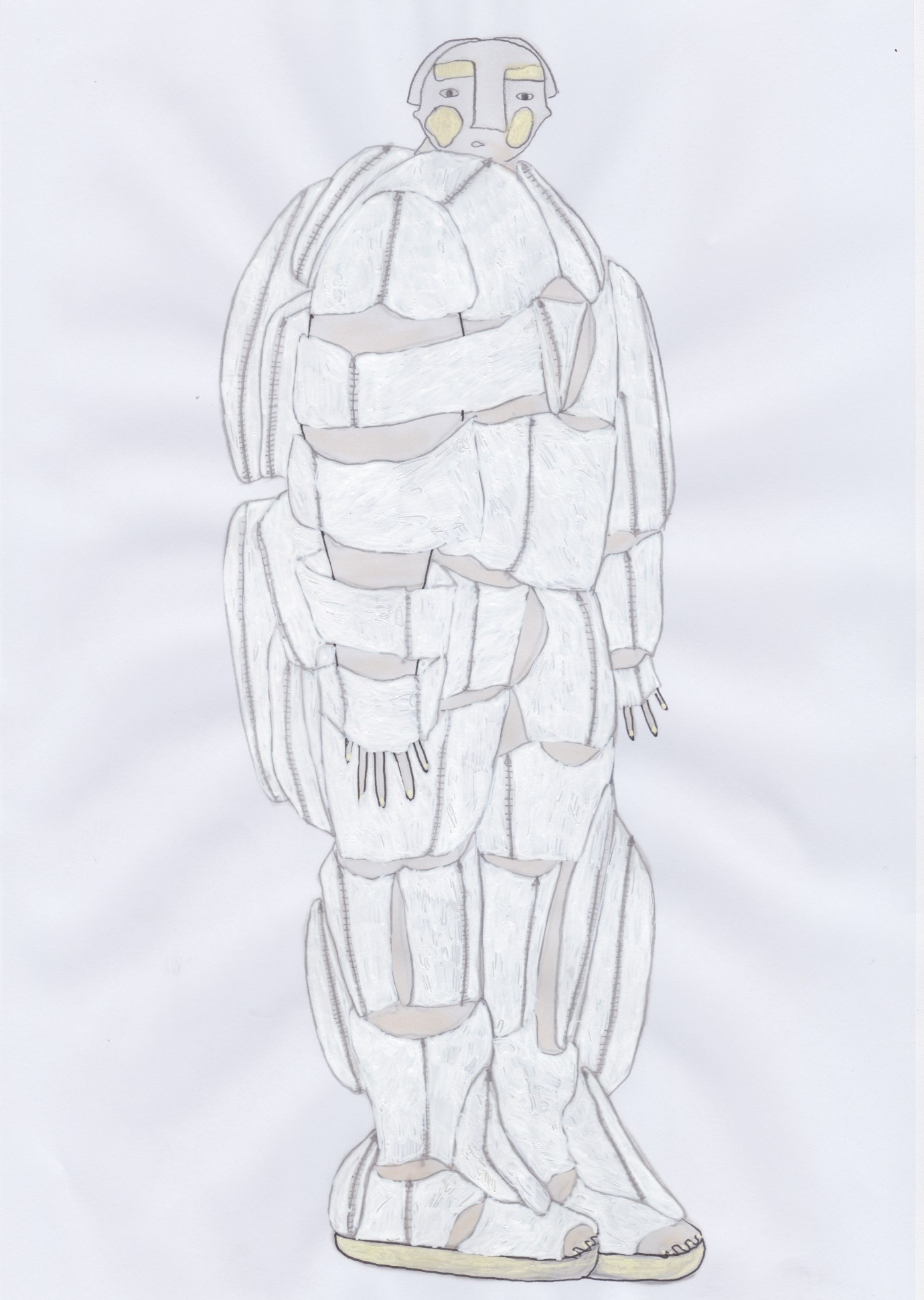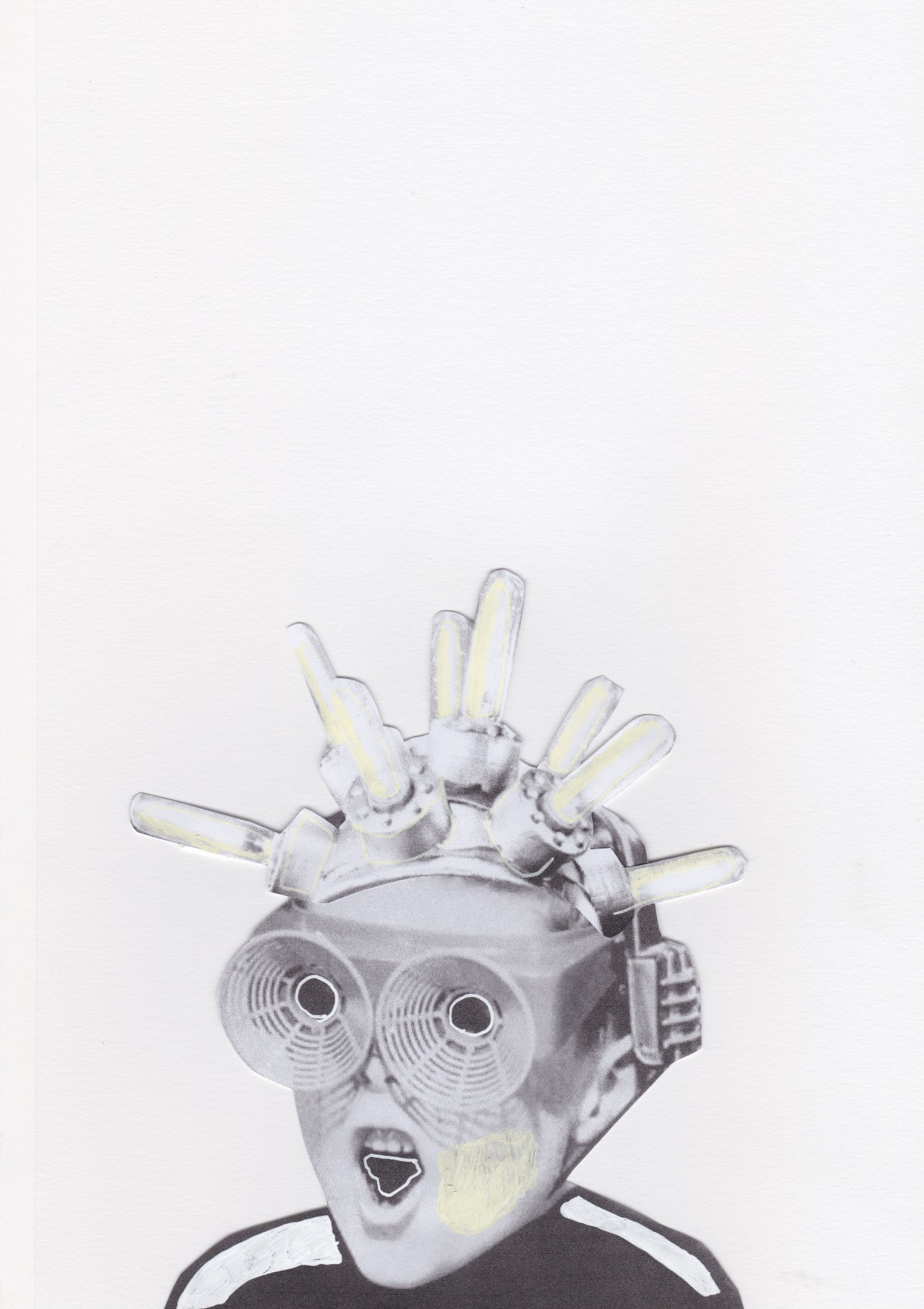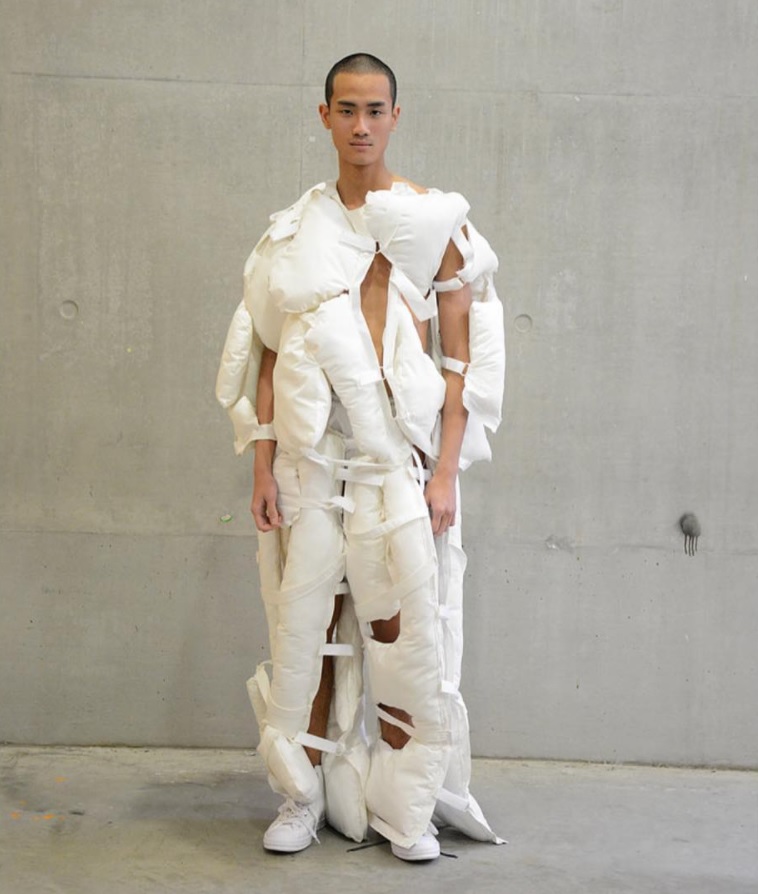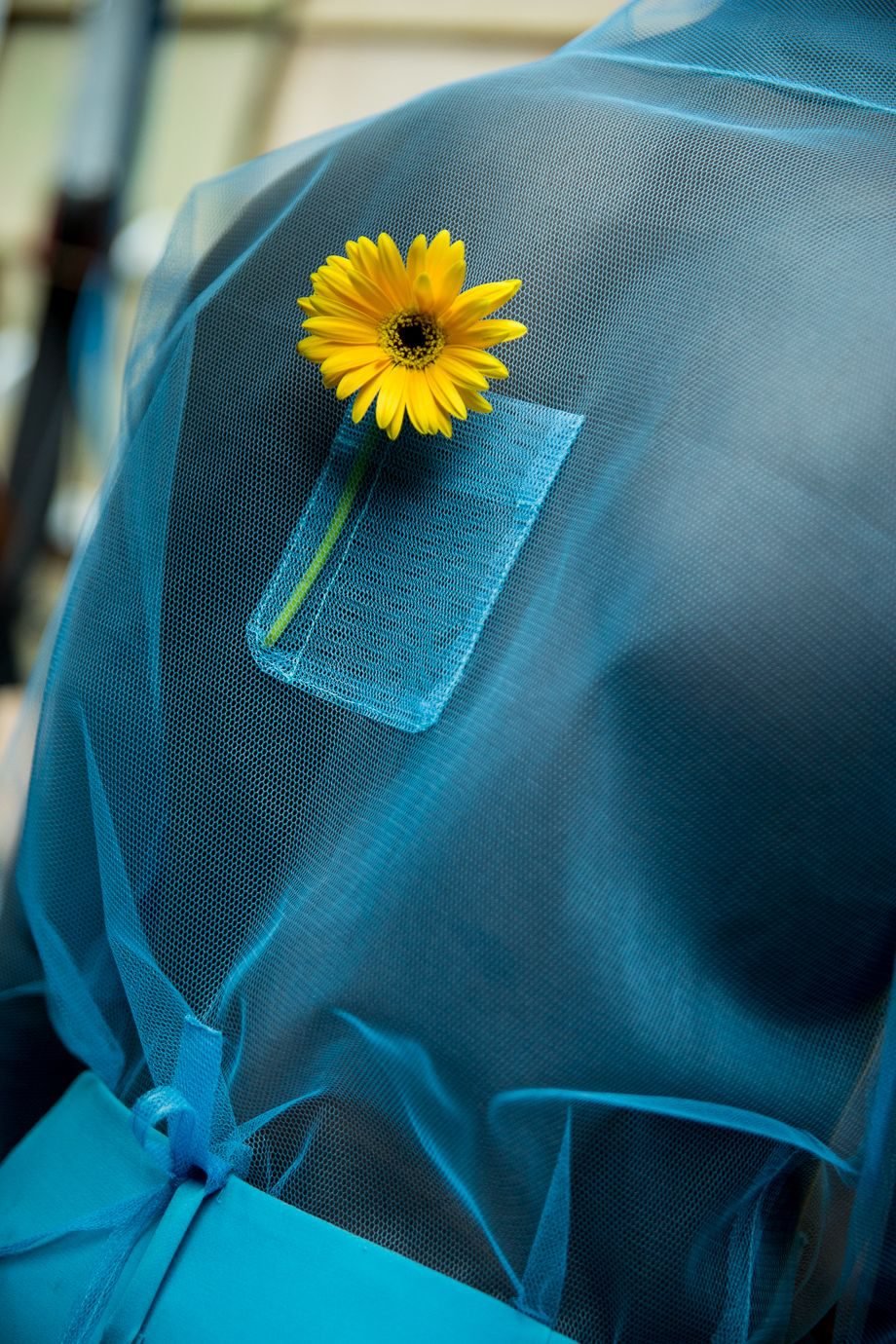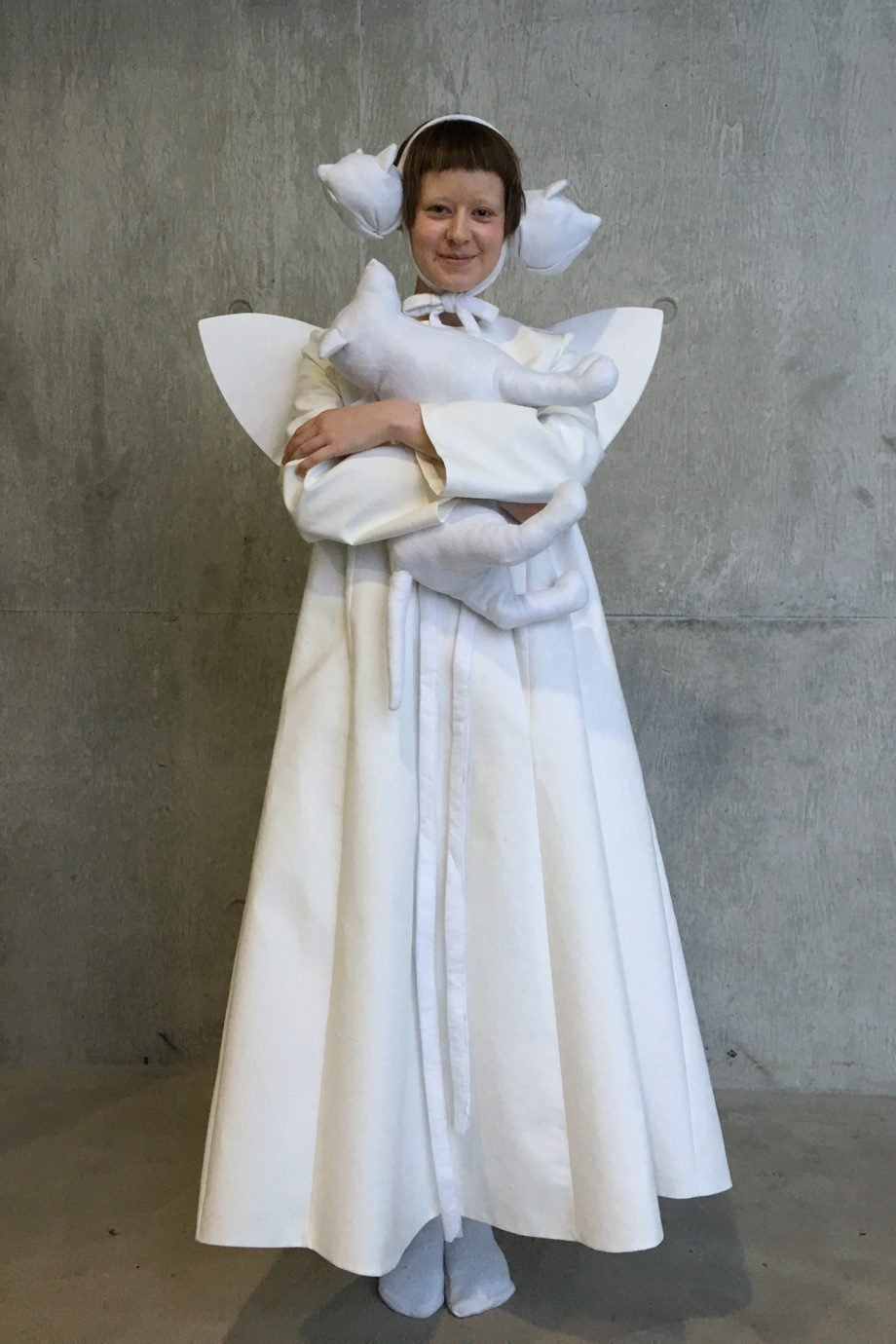It is hard at first to see this inspiration within Stephanie’s look, because the result is something entirely unexpected. The clothes are better appreciated in 360-degree view, so that the complexity of the cuts and the detailing can be fully absorbed. From the left profile, the outfit has the more conventional look of a straight leg trouser (with a cut-away side stripe) worn with a puffer jacket – sporty and masculine. But from any other angle, the clothes appear completely different. White fabric is tethered together with tapes connecting multiple padded 3D shapes, forming an armour-like suit. Stephanie’s dynamic sketches trace these clothes back to the source of inspiration. During her research, she illustrated the isolated body parts in the shell of a robot and focused on their oversized nature – a maximal look achieved through the use of wadding.
Stephanie Uhart Negret – Old and New
The White Show is tomorrow, so here's another amazing design from last year!
London spurred Stephanie Uhart Negret’s inspiration for The White Project. This may sound like standard protocol, but the Chilean knitwear designer subverted the typical idea of the city through her own distinctive lens, coming out with something startlingly different. “I find inspiration in different places, it’s always something different. For this project, I started looking at the borderline between robotic humanoids and humans, which I saw a lot in a cityscape.” London is laced with a historical architectural landscape that juxtaposes the old with the new and technologically advanced. Modern aesthetics tend to be streamlined, simple (on the surface), and metallic/robot-like.
These exaggerated dimensions provided some hurdles for Stephanie, whose main priority was to make the piece resemble clothing. “I needed it to be actually wearable and walkable and stop it looking like someone went outside with their bed on.” In general, the whole idea of the project was a challenge, since Stephanie’s designs usually contain a playful injection of colour. “I have learned it is really important to experiment with different ways of working,” she reflects. “Using only white and neutral colours changed, in a positive way, how I approach my working process.” Colour can enhance a concept – it is packed with emotion and underlying meanings – but Stephanie used this restriction to enhance the other elements of her work. “Not having to worry about a colour palette helped me focus more on the silhouette and structure of the garment.”
The super-scaled, robotic structure of the final look addresses fears existing within today’s society. Machines are stronger, larger, more capable. “Robots are built to resemble humans, but they have super-human abilities,” says Stephanie. The evolution of technology has always been unsettling: this year, unions have risen to critique the replacement of humans with automated services, echoing the Luddites’ protest against factories’ use of the sewing machine and the dismissal of their craft in the early 19th century.
But although the inspiration may have threatening or foreboding connotations, the designer describes the final look in realistic terms: “It’s like, a very comfortable, soft, big extension of oneself.” Life’s demons: zero. Stephanie: one.

